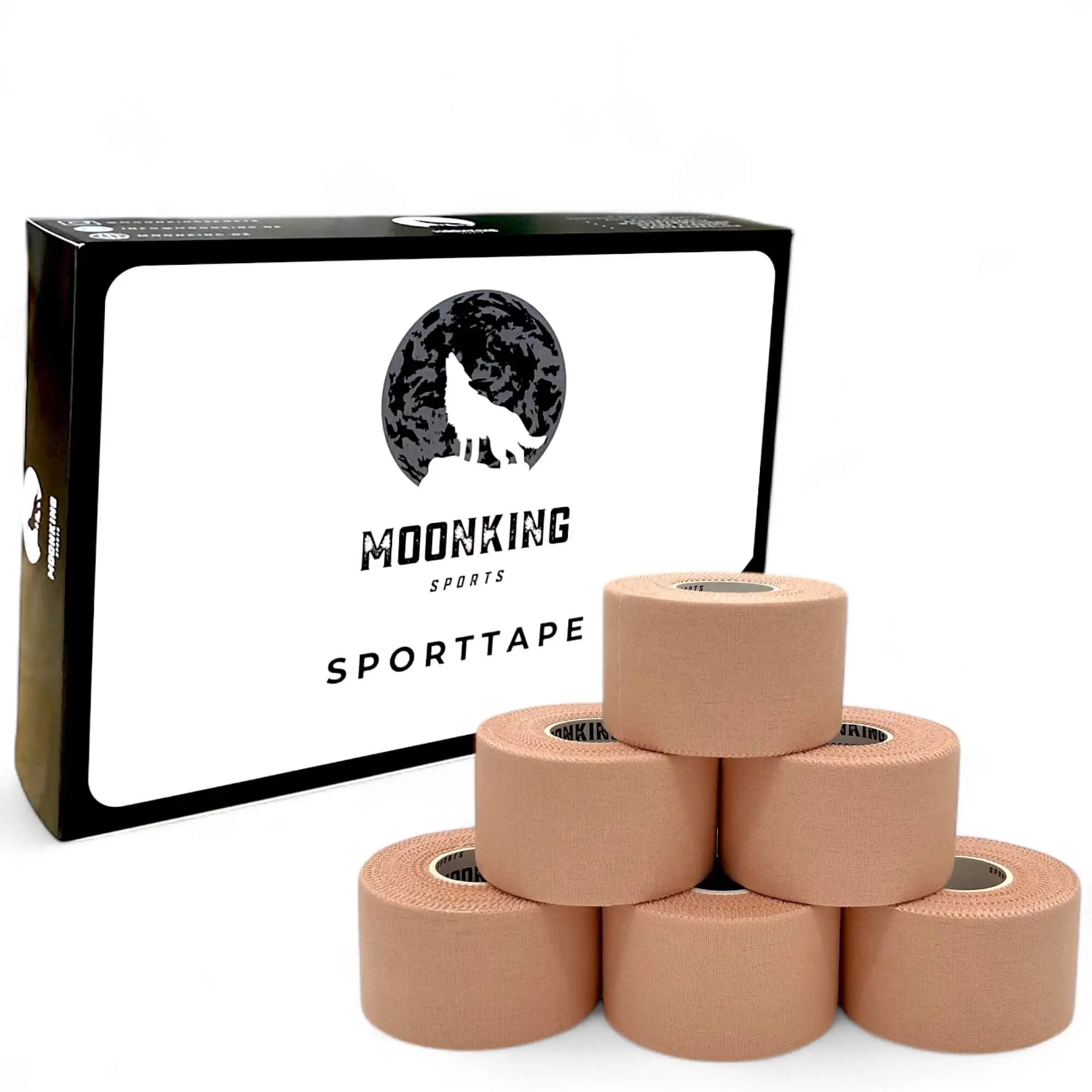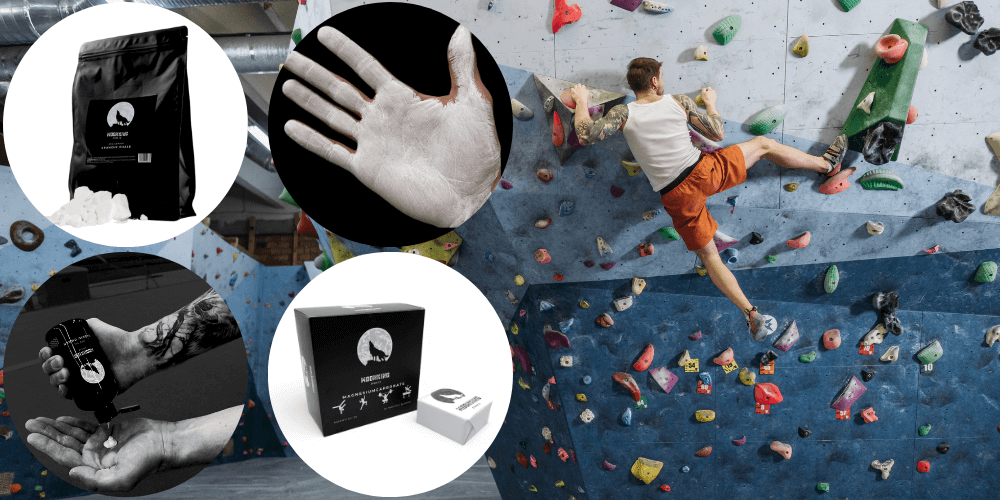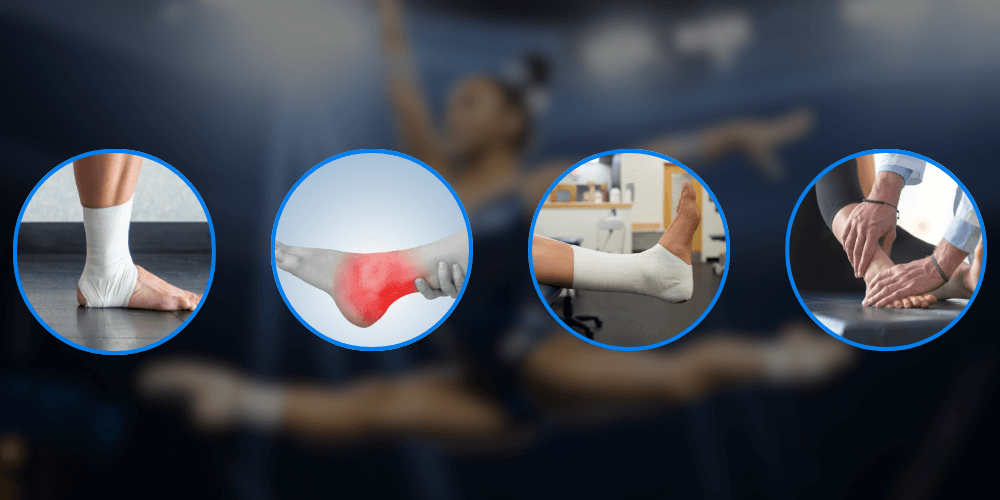Tape products at a glance – your guide to application and benefits
Tape has become an indispensable part of the world of sport and physiotherapy. Whether to support joints, relieve pain or improve movement sequences - the diverse tape products offer you tailor-made solutions for almost every situation. In this article, you will learn which tapes are available, what they are suitable for and how you can use them optimally to increase your performance and prevent injuries.
1. Sports tape
What is sports tape?
Sports tape is a non-elastic adhesive tape that is specifically used to stabilize joints and prevent injuries. It offers you firm support and limits excessive movement to protect structures that are prone to injury.
Areas of application:
- Ankle joints: stabilization in case of sprains and overload.
- Knee joints: Support in case of ligament injuries or to fix the kneecap.
- Elbow: Relief for tennis elbow or golfer’s elbow.
- Wrists and fingers: protection against overload and skin tears.
Advantages:
- High stability and effective fixation.
- Low material consumption and easy application.
Disadvantages:
- Limited freedom of movement as it is highly immobilizing.
- Incorrect use may cause skin irritation.
Suitable sports:
Sports tape is particularly suitable for sports with a high risk of injury such as gymnastics, football, handball, basketball, volleyball, climbing and bouldering.
2. Kinesio tape
What is Kinesiotape?
Kinesio tape is an elastic adhesive tape designed to support your body's natural movement. It is made from skin-friendly cotton and special acrylic adhesive and is designed to promote blood circulation, relieve pain and improve muscle and joint function, among other things.
Areas of application:
- Pain relief: For muscle tension and chronic complaints.
- Joint instabilities: Support for mild instabilities.
- Improve lymphatic drainage: Promotes the drainage of fluids and reduces swelling.
- Promotes healing: Activates the body’s self-healing powers.
Advantages:
- Increased freedom of movement and flexible application.
- Versatile applications and promotion of natural regeneration.
Disadvantages:
- Higher material consumption compared to sports tape.
- Often requires a more complex installation technique; the effect is not always clearly proven scientifically.
Suitable sports:
Kinesio tape is mainly used in sports where rapid regeneration and optimal movement functions are crucial.
3. Underwrap Tape
What is Underwrap Tape?
Underwrap tape is a thin, elastic adhesive tape that serves as a base for sports tape or kinesiology tape. It protects your skin from direct irritation from the upper tape and at the same time improves the adhesion of the following layer.
Areas of application:
- Base: As a base for the application of sports or kinesiology tape.
- Fixation: Assistance in fixing bandages.
Advantages:
- Effectively protects the skin from irritation.
- Improves the adhesion and longevity of the tape applied to it.
- Cost-effective to use.
Disadvantages:
- No standalone application – it must always be used in combination with another tape.
4. Other tape products
In addition to the main types, there are additional products that meet individual needs:
- Cotton tape: Similar to sports tape, but softer and particularly skin-friendly.
- Acrylic tape: Waterproof and ideal for use in water or during activities that involve heavy sweating.
- Color tape: Used for individual design and better visibility of the tapes, ideal for marking specific areas.
When to use which tape?
Choosing the right tape depends on several factors:
- Type of injury: For acute injuries, sports tape is often more suitable, while kinesiology tape is used for chronic complaints and to support natural movement.
- Stability required: If strong stabilization is required, use sports tape. If, however, you want to maintain freedom of movement while providing light support, kinesiology tape is the better option.
- Personal preferences: Consider your individual needs and sport-specific requirements.
Application tips for optimal taping
- Skin preparation: Make sure the skin is clean, dry and hair-free to ensure optimal adhesion.
- Correct application technique: The exact technique varies depending on the tape and the region to be treated. Professional instructions from a doctor or physiotherapist can be crucial here.
- Wearing time: The length of time the tape is worn varies depending on the product and indication.
- Contraindications: Avoid applying tape if you have open wounds, skin allergies or thrombosis.
Conclusion
Tape products offer you a wide range of possible applications in sports medicine and physiotherapy. Whether for stabilization, pain relief or improving movement sequences - the choice of the right tape should always be individually adapted to your situation. Professional advice from a doctor or physiotherapist is recommended in order to achieve the best possible effect.
Important note: This article is for general information purposes only and is not a substitute for professional medical advice. If you have any health problems, you should always consult a specialist.









